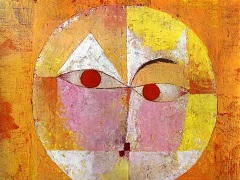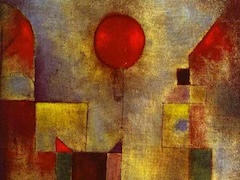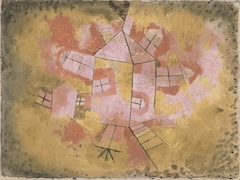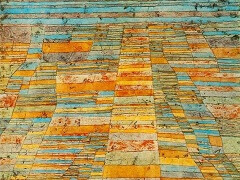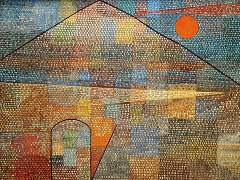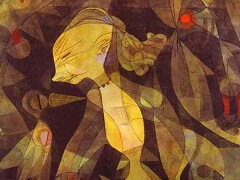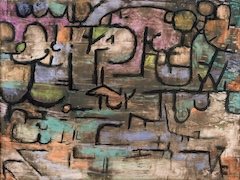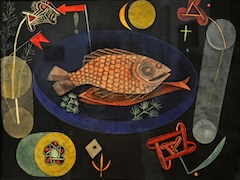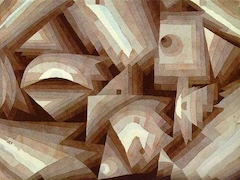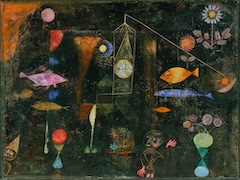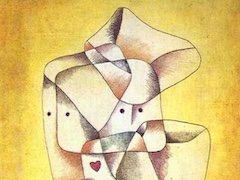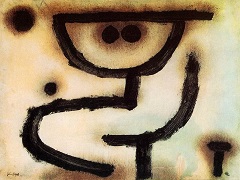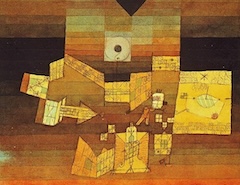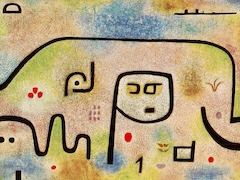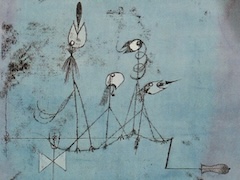Death and Fire, 1940 by Paul Klee
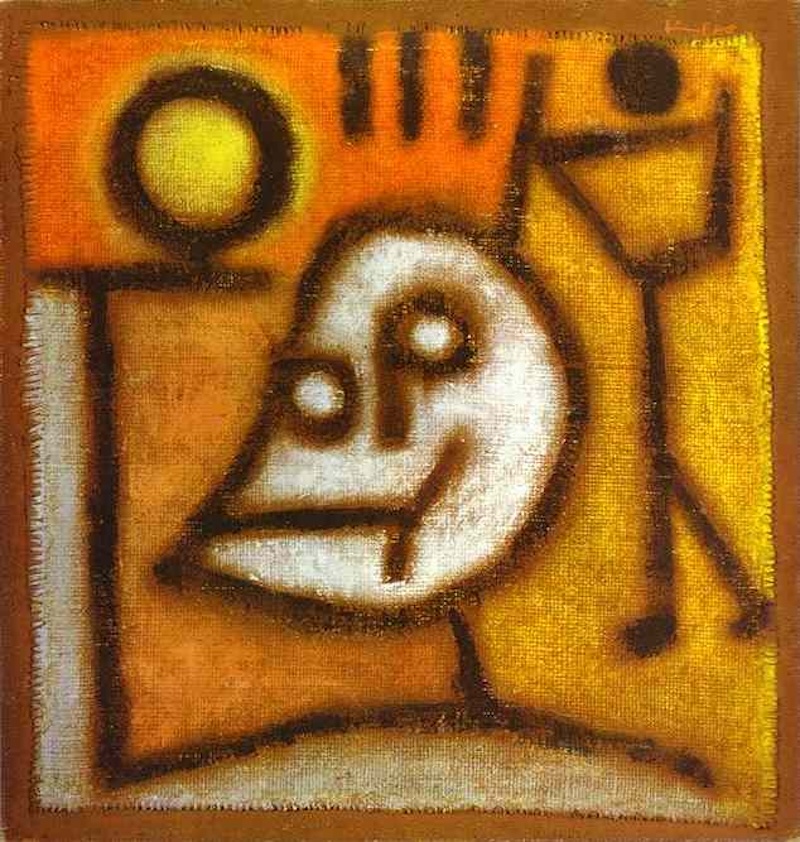
The German word for death, Tod, makes up the features of the white face in the center of the picture, so powerfully, yet simply reminiscent of a human or an animal skull. "Tod" may be found again in the "T" shape of the figure's raised arm, the golden orb in its hand, and the D shape of its face. Perhaps a minimally described man walks toward Death, or perhaps towards the glowing sun held in Death's hand. The image juxtaposes the cold white with the warm reds and yellows, perhaps symbolic, like a kind of cave painting, of the creation of man and the image of his sad mortality. Inspired by Klee's interest in hieroglyphics, Death and Fire suggests that abstraction and representation have been mutually accommodating, or otherwise complementary means of expression, since time immemorial.
Knowing that the end was near, Klee painted his own grimacing death mask without compassion. A silhouette moves forward from the background on the right, and in the foreground, dominating the work, a death's head on top of a skeleton comes out of the earth, brandishing a golden ring with which it tries to catch the attention of the silhouette, which is going to go across the fire of life. But this is merely an interpretation; whereas the shock of the image hits one immediately. Using well-tried plastic means, Klee managed to transpose the ultimate human challenge into artistic form. Death's face recalls the tormented features of a pastel self-portrait of the same year subtitled Hold Fasti.
His conception of death is teleological and is thus experienced as the continuous approach of an inaccessible totality. At the same time it is a conception of the world here and the world beyond, a gnostic tension that is very obvious here, but that could already be seen in a 1923 work called Angelus Novus, which Walter Benjamin made into his personal mandala. It is also about the recognition of the historical breaking points that take place in human development, that is the dissociation of humankind and nature. The image in its totality is a symbol of funerary rites where the ferryman takes the dead to another empire.

